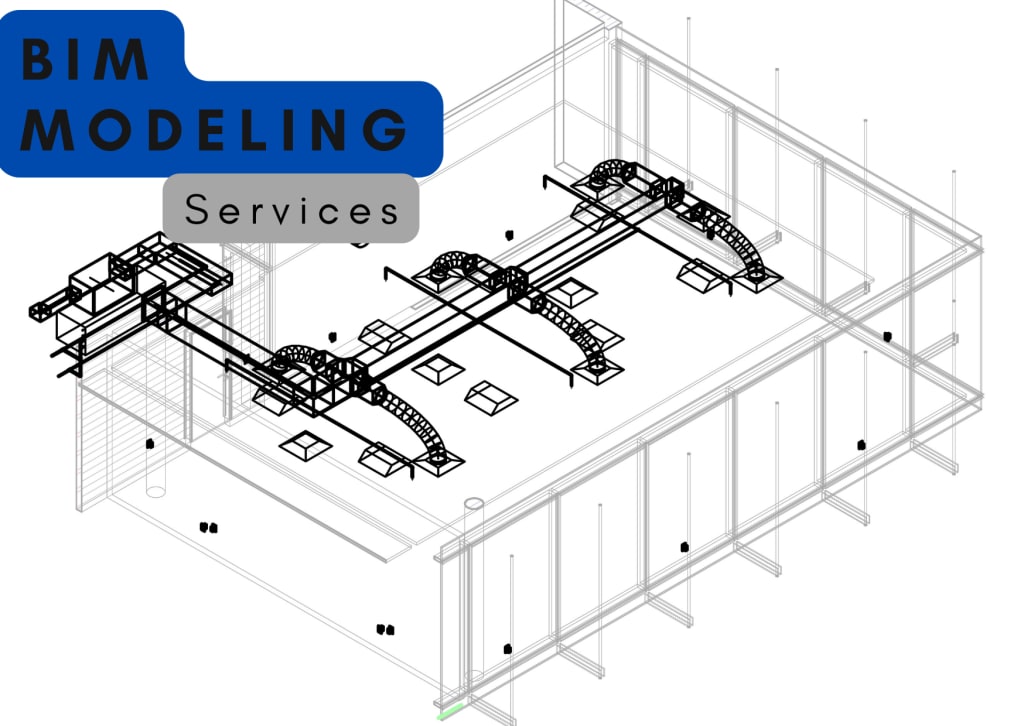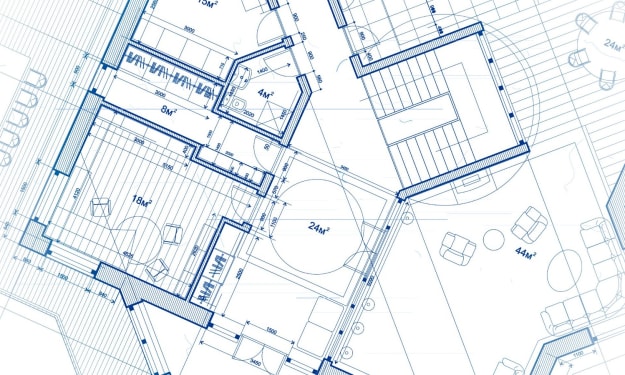BIM Modeling Services - Applications and Benefits
Read all applications and advantages of BIM Modeling Services in detail here.

Introduction
What is BIM Modeling?
Building Information Modeling (BIM) is the process of creating 3D information architectural, structural, and MEP models.
These models are used by construction professionals for critical decision-making. Construction professionals from different disciplines exchange BIM models for effective coordination and early clash resolution of a construction project.
BIM stands for Building Information Modeling. Although ‘BIM’ stands enough for implying the meaning.
Over the years in the AEC industry, BIM Modeling Services has become quite popular and understood by construction professionals. So much so that it is quite searched frequently on google by people all over the world.
BIM is not software, it's a process. Right from the conceptual stage till completion, BIM is used as a tool for effective Construction Management.
Who uses BIM Modeling Services?
There is no specific group of construction professionals that uses BIM modeling Services. In a construction project, there are multiple designers, architects, engineers, contractors, and subcontractors.
If the project manager or owner chooses to use BIM as a tool for construction management then each of the project stakeholders is required to create a BIM Model.
Below is the list of professionals that commonly use BIM Modeling Services:
- Architects
- Civil Engineers
- Mechanical Engineers
- Lighting manufacturers
- Plumbing manufacturers
- Interior designers
- Construction Managers
The use of building information modeling services widely depends on the nature of the project and the Level Of Development (LOD) required by the project owner.
The next section discusses the criteria for assessing the level of development (LOD) required for BIM modeling.
Levels in BIM

The Level is the standard for assessing the degree of information integrated into a BIM model during a particular stage.
BIM Services providers commonly ask this question to the construction professionals before starting any project. Often the BIM services seeker decides to use BIM in between the design process.
The levels in BIM help you assess the kind of information you might need before collaborating with the BIM Modeling Services provider.
3D BIM Modeling
This stage involves the development of a 3D model using software such as Revit. The process involves reviewing the 2D drawings and converting them to a 3D model.
The degree of detail is assessed depending on the design stage of the project.
Whether the project is in the conceptual design stage or detailed design stage, you can suggest to your BIM partner what level of detail you wish to achieve.
The 3D BIM Models are prepared in architectural, structural, and MEP disciplines.
4D BIM Modeling
4D BIM involves simulation and scheduling of the design elements as per the timeline. This is also known as the fourth dimension of ‘time’ in the BIM modeling process.
The construction timeline prepared by the project manager is integrated into the 3D BIM Modeling in software such as Navisworks. This is a powerful way for construction to manage the construction process on-site in a virtual 4D environment.
5D BIM Modeling
The fifth dimension added to a building information model is cost. 5D BIM Modeling avoids the complex and tedious cost estimation process done on excel.
It is a smart way of generating precise and relatively quicker BOQs. 5D BIM is an essential step for generating accurate cost forecasts through a BIM model.
6D BIM Modeling
The lifecycle and facilities management is the sixth dimension of BIM.
Developing a 6D BIM Model involves the integration of maintenance, life cycle, and operational costs of a building.
It is a powerful tool as it helps the facilities managers track the accurate cost for the lifecycle and maintenance of a building.
How to Implement BIM on Projects?
BIM is a powerful construction management practice used by construction professionals.
There are several ways of adopting BIM on projects:
1 - Best BIM Practice
The best practice for implementing BIM is to involve BIM consultants right from the conceptual design stage of the project till completion.
‘Best BIM Practice’ allows construction professionals to maximize the benefits of ‘levels of BIM’ on a construction project.
2 - Stage wise BIM Modeling Services
Often a project stakeholder requires a BIM model for a particular stage and discipline.
For instance, an Architect wishes to or is asked to develop a BIM model for his design to check it against the structural and MEP model to find potential errors.
In this case, the project stakeholder, if it doesn't have in-house BIM capabilities, would outsource the 3D BIM Modeling Services to a third-party consultant.
The BIM Consultant would take charge of the BIM modeling operations on behalf of the aforementioned stakeholder.
3 - One-time BIM Modeling Services
Often a contractor or sub-contractor is asked to develop Revit models or Revit families by the employer.
For instance, a lighting production company is asked to develop a Revit family of their product as the employer wishes to include the family in the main BIM model.
In such cases, the contractor/subcontractor will outsource BIM modeling requirements to a third-party consultant.
This applies to small or medium-sized architectural, engineering and construction companies that don’t have in-house BIM capabilities and choose to partner with a BIM consultant.
Stage-wise Advantages of BIM Modeling
1 - Conceptual Design Stage
- Allowing the development of design and decision-making in a 3D virtual environment
- Promoting collaboration between architects and other stakeholders
- Helping stakeholders assess the aesthetics of the chosen design element
- Giving better insight into the design before moving to the detailed design stage
2 - Detailed Design Stage
- Gives an insight into the look and feel of the exteriors and the interiors
- Identifying potential clashes between the design elements
- Enabling better collaboration between project managers, engineers, and architects
- Inputting the detailed design information to the 3D model such as; rebar, column & beam sizes, foundation detail, architectural materials, etc.
- Preparing accurate cost estimates before construction to avoid cost overruns
- Controlling time and cost overruns and promoting better coordination
3 - Pre-Construction Stage
- Effective site management using 4D Scheduling
- Superior construction management strategy
- Assessing the impact of a construction activity
- Eliminating potential design risks using clash detection
- Well-coordinated design delivered by the design team
About the Creator
Cresire Consulting
Cresire Consulting is the best CAD and BIM Outsourcing Services company in USA and India that provides CAD and BIM Services across the globe. For more info, email us at [email protected].






Comments
There are no comments for this story
Be the first to respond and start the conversation.